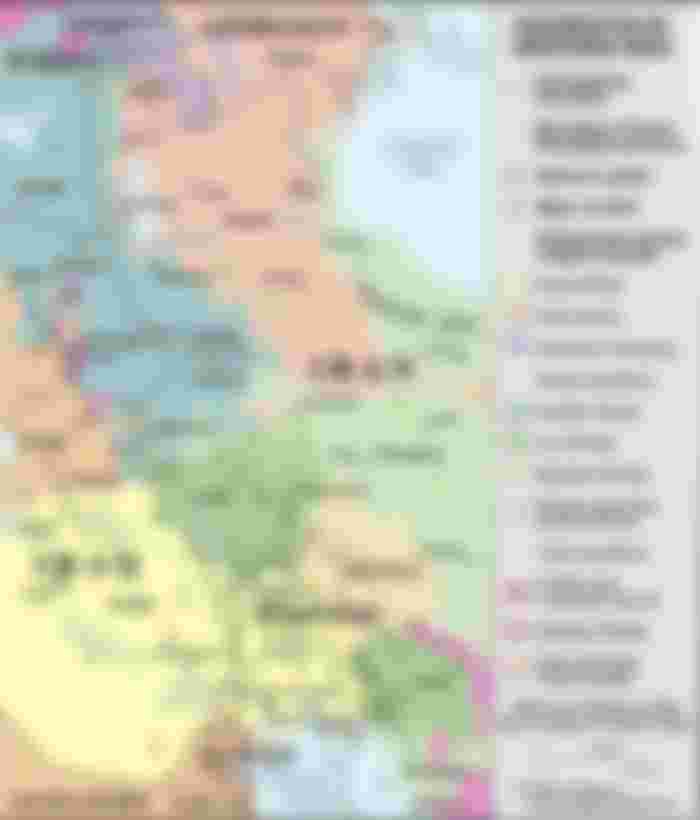Today, I will continue talking about Iraq. If you have missed my previous post, you can read it here: How everything started in Iraq - Part. 1.
The previous post ended at the moment when Saddam Hussein raised to power and became the President of Iraq. Now, I will cover the next period of Iraq's history, including the Iran-Iraq war.
So, after pressuring Al-Bakr to retire, Saddam became the new president of the country, but in order to ensure a secure transition of power, Saddam ordered the execution of dozens of top ranking officials.

Saddam had done it. After decades of work, he had secured the position as the fifth president of Iraq at 42 years of age. He wished to flex his newfound power and show the world the superiority of the Iraqi Arabs. He needed an enemy, someone to rile people up against and so he chose Iran for several reasons.
First of all, the Iranians were seemingly an easy target. Recently coming out of a revolution that left the Ayatollah Khomeini leading a Shia theocracy. They were unorganized, unproven and had made many enemies. They also had no friendly feelings towards Iraq either. As Khomeini proclaimed they would expand their theocratic ways across the evil secular nations that surrounded them, a nation like Iraq.
Of course, not everything was based on ideology. There's always a goal, if not multiple. The goals were to annex the region of Khuzestan, a predominantly Arab region of the Persian rule, secure the Shatt al-Arab waterway which connected the economically vital Tigris and Euphrates rivers and secure a nice big gulf shoreline with some good oil fields.

On the 22nd of September 1980, Saddam declared war in a surprise attack. He decided as a man with no military education, not even a secondary school pass, he would be the best fit for the Supreme Commander of the military strategy. His plan was so exceedingly cunning. He would order a third of his army to move across the northern border, securing the defense of Baghdad in case of any counter-attack. He ordered another third of his army to move through the center, cutting off the north and the south of Iran and yet another third would move across the south, securing their objectives in Khuzestan or, to simply his strategy, he lined his entire army up on the border and told them to march forward.

In Saddam's defense, he did expect the Iranians to almost immediately splinter, but then to criticize Saddam, he was completely wrong. His invasion served to cement Khomeini's rule as he was able to rally his people behind the common enemy, a bit like almost exactly what Saddam was doing.
Saddam also severely overestimated his own army's ability. He assigned them too many objectives at once and planned his strategy without even considering an Iranian defense. The Iraqis would quickly find themselves overstretched and over-encumbered in an attempted retreat.
Saddam wasn't very fond of this and executed any general who dated to do so. After executing about three of them, he ordered a retreat. Within two years, the Iraqi army had been forced onto the strategic defense and Saddam considered a unilateral ceasefire.
Khomeini refused, overestimating his own forces just like Saddam had. He demanded that Saddam be removed from power and Iran receive compensation. Take a wild guess at how Saddam felt about that option? :)
Iran launched Operation Ramadan. Objectives were to capture Basra, Iraq's only port and sprinkle a bit of destroyed infrastructure everywhere they went. With the war lasting as long as it did, Iraq still needed to make money and so would run its oil trading through third-party countries such as Kuwait and Saudi Arabia.
Tehran decided that id didn't care too much about little things like internationally witnessed war crimes and continued on attacking Iraq's oil shipments causing many of the world's powers to back Iraq against this menace. Iran, with only numbers and radical fervor to the name launched attack after attack towards the Iraqis and trench positions, only to be slaughtered in chemical weapons attacks and artillery barrages, heavily reminiscent of the Great War.

By 1988, Iran had exhausted itself with persistent failure over the years. It lacked the resources to continue sending their men to the slaughter, only to be thanked with scud missile attacks on Tehran. By April 1988, after having been gifted a substantial amount of resources and now prioritizing the benefits of mechanized warfare, Iraq was able to launch a large-scale counter-attack into Iran. This would be the final breaking point.

Khomeini accepted UN resolution 598, calling for an immediate ceasefire on July 20, 1988. Official peace would come later on the 20th of August and most would consider the result as a stalemate. Iraq and Iran though, both believe that they were the respective victors. Over a million had died and Middle Eastern affairs had been permanently scarred, but no side made any true gains.
So, you've seen what happened after Saddam came to power and how the Iran-Iraq war was fought. Tomorrow, I will present the first Gulf War. Keep close, enjoy reading!
My successful faucets!
PipeFlare & Hive ZCash - ZEC with tier 4 referral program
FreeCryptos: (DASH), (TRX), (ETH), (Cardano), (BNB), (LINK), (NEO), (LTC) & (BTC)
Stakecube (over 20 single click faucets per day)
Get Maiar for free! The future of money: powered by Elrond!
Join DeFi and get $30 of DFI. Join CakeDeFi now!!
Try Celsius and earn $20 for free.





How many episodes?